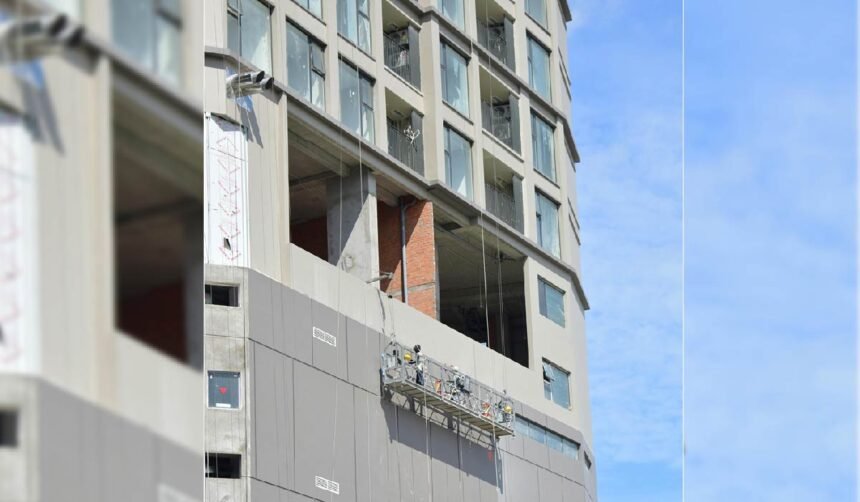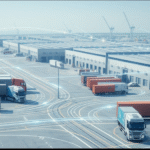Understanding Rainscreen Cladding
Why Damp is Such a Problem for Properties
Moisture is one of the biggest threats to buildings, whether residential or commercial. Damp can seep into walls, weaken structural integrity, encourage mould growth, and increase heating costs by reducing insulation performance. Left untreated, it can also affect the health of occupants, causing issues such as respiratory problems. Preventing damp is therefore not just about property maintenance but also about creating safe, comfortable environments. Rainscreen cladding systems are a modern solution that directly addresses these challenges.
The Role of the Ventilated Cavity
One of the defining features of rainscreen cladding is its ventilated cavity. When rainwater makes contact with the outer cladding, most of it runs off immediately. Any water that does penetrate behind the panels evaporates quickly because of the airflow in the cavity. This prevents water from reaching the internal walls. By promoting continuous ventilation, rainscreen systems ensure the building envelope stays dry, even during prolonged periods of wet weather. This principle, known as the “drained and ventilated” approach, is one of the main reasons why these systems are highly effective in preventing damp.
Protection Against Weather Damage
The UK climate can be unpredictable, with heavy rainfall, storms, and sharp temperature shifts. These conditions put enormous pressure on external walls. Traditional finishes such as render or brickwork may crack or absorb water over time. Rainscreen cladding systems create a durable barrier that reduces the direct impact of weather. Materials like aluminium or high-pressure laminate used in Rainscreen Cladding are chosen for their ability to withstand rain, UV exposure, and frost without degrading. This ensures that the building continues to look appealing while remaining structurally sound.
Energy Efficiency Benefits
Rainscreen cladding does more than protect against water ingress. It also plays a role in improving the thermal efficiency of buildings. The ventilated cavity can be combined with insulation to create a high-performance envelope that reduces heat loss in winter and prevents overheating in summer. In turn, this lowers energy bills and supports environmental goals. According to research by the UK Green Building Council, improving building envelopes is one of the most effective ways to cut energy use and carbon emissions. For property owners, this makes rainscreen cladding a long-term investment with both protective, financial and environmental benefits.
Low Maintenance and Longevity
Another advantage of rainscreen cladding systems is their low maintenance requirements. Because moisture does not reach the structural walls, there is less risk of damage, mould, or staining. The outer panels, particularly aluminium cladding, are easy to clean and retain their appearance for decades. This reduces ongoing repair costs, making rainscreen systems a practical choice for both schools and commercial buildings that require long-term performance without high maintenance budgets.
Design Flexibility for Modern Properties
Beyond functionality, rainscreen cladding offers design freedom. Available in a wide range of finishes, colours, and profiles, it allows architects and property owners to achieve both modern and traditional aesthetics. Aluminium cladding, for example, can replicate the look of natural materials while providing a lightweight, weather-resistant surface. This flexibility means that rainscreen systems can enhance the curb appeal of a property while delivering superior weather protection.
Suitability for Residential and Commercial Buildings
Rainscreen cladding is suitable for a wide range of properties. In residential housing, it protects against damp and improves comfort for occupants. In commercial settings, such as offices, schools, or healthcare facilities, it ensures that buildings remain durable, efficient, and visually appealing. Its adaptability means it can be applied to both new-build projects and refurbishment schemes, extending the life of older properties and bringing them up to modern performance standards.
Addressing Safety and Compliance
Safety is another reason why rainscreen cladding systems are widely used. Materials are carefully selected to meet fire safety standards, and modern systems are rigorously tested for durability and performance. Compliance with building regulations is an essential part of any installation, and working with experienced providers ensures that the cladding performs as expected. This focus on safety, combined with the proven effectiveness of ventilated systems, makes rainscreen cladding a reliable choice for long-term building protection.
Cost-Effectiveness Over Time
While the initial cost of rainscreen cladding may be higher than some traditional finishes, the long-term benefits make it a cost-effective choice. Because the system protects the structural walls from damp and reduces the need for frequent repairs, ongoing maintenance costs are significantly lower. In addition, its energy efficiency helps cut heating and cooling bills, providing financial savings year after year. For many property owners, this combination of reduced running costs and extended building lifespan outweighs the upfront expense. When considered over decades, rainscreen cladding is one of the most economical investments you can make for protecting and enhancing a property.
Conclusion
Rainscreen cladding systems provide a robust solution to two of the biggest challenges faced by buildings in the UK: damp and weather damage. By using a ventilated cavity system, they prevent moisture build-up, reduce energy loss, and protect structural integrity. They also offer design versatility, low maintenance, and compliance with modern safety standards. Whether for residential or commercial projects, investing in rainscreen cladding ensures that properties remain dry, efficient, and visually appealing for decades to come.







